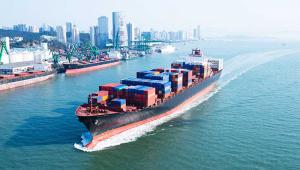Web_ElderlyWomanMyanmar_iStock_000017853743_Large.jpg

The fund said Asia's prospects are looking up in the short term, but there are a number of significant challenges ahead, including from rapid population ageing that is accelerating at a faster rate than seen in Europe and the US.
However the fund warned that its optimistic predictions for the region remain “clouded with uncertainty”, both in the short and long term.
The challenge for Asia-Pacific now will be “to strengthen and sustain” this so far encouraging momentum, Changyong Rhee, director of the IMF’s Asia and Pacific Department said.
But for now, both globally and regionally, the largest economies are picking up. Against this backdrop, Asia-Pacific’s forward-looking indicators suggest strong activity in the region for the first half of this year.
After growth of 5.3% last year, the fund expects the region to expand by 5.5% in 2017 and 5.4% in the year after.
While growth in most of southeast Asia’s economies will accelerate, the IMF expects a further slowing in China (to 6.6% this year and 6.2% in 2018) and India, although this will rebound to 7.2% in the 2017-18 financial year as the effects of the country’s rash demonetisation wane.
Growth in Korea and Japan will remain subdued, it continued, although the latter’s 2017 outlook has been raised to 1.2% thanks to growth-boosting fiscal policy and the decision to postpone the implementation of a consumption tax until October 2019.
However, some of the factors that have prompted the fund to improve its predictions for the region could also derail their realisation.
A big programme of spending, investment and tax cuts in the US could boost demand for Asian exports, for instance, but it could also push the US Federal Reserve to raise interest rates in response to inflation, restricting access to finance in the region and potentially triggering capital outflows.
Any shift towards protectionism from the US or elsewhere could also prove problematic for Asia-Pacific in particular, because the region’s economies are geared towards trade openness and high integration in global value chains.
Inward-looking policies could not only hit the region’s exports, but discourage foreign investment.
In the longer-term, the IMF pointed out that Asia’s population is ageing at an extraordinary rate – faster than the trend in Europe and the United States.
Asia-Pacific’s population growth rate – already negative in Japan – is expected to fall to zero by 2050, while the working-age population is already at its peak and set to decline in the coming decades.
The fund said the share of the population over 65 will increase rapidly and reach close to 2.5 times the current level by the middle of the century, while in east Asia – the fastest-ageing region – the number of people not in the labour force will triple compared to the number that are.
This will put significant pressure on government budgets, the fund continued, and could translate into a reduction in annual growth of between 0.5 and 1 percentage point in relatively old economies like China and Japan.
It stressed the need for policies to protect the region’s vulnerable elderly population have a “particular urgency”, including measures to encourage women and older people to work and strengthen pension systems.













